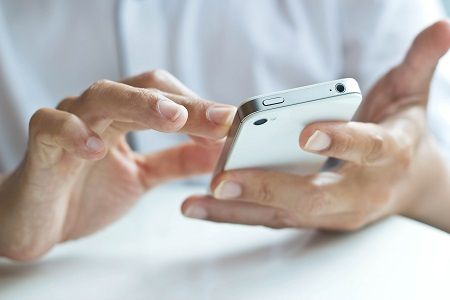Telemedicine Achieves Similar BP Control as Regular Visits After AMI
New research from a feasibility trial suggests new technology could help patients achieve BP control at a similar rate as regular visits.

With the ongoing COVID-19 outbreak pushing the use of telemedicine to the forefront, new data examining the effect of smart-phone enabled monitoring compared to regular follow-up visits on blood pressure control could prove useful for clinicians and patients alike.
Results of the randomized trial, which was conducted at the Department of Cardiology of the Leiden University Medical Center in the Netherlands, indicates use of smartphone-compatible devices yielded similar results as standard of care—suggesting the new technology could be used in real-world settings and could be adopted easily by patients.
To assess whether use of new technology was associated with compliance with guideline-based therapy, investigators designed a an open-label, single-center, parallel-group, feasibility randomized clinical trial. With blood pressure as the chosen compliance marker, the 1-year study randomized 200 patients who had suffered acute myocardial infarction (AMI) in the previous in a 1:1 ratio to receive either standard care or a smart technology intervention called “The Box”.
All patients included in the study were admitted to the Department of Cardiology of the Leiden University Medical Center with AMI from May 2016 to December 2018. Exclusion criteria included being less 18 years of age, being pregnant, unwillingness to sign informed consent, and the inability to speak Dutch or English.
The smart technology intervention consisted of 4 smartphone-compatible devices—specifically, a blood pressure monitor from Withings, a step counter from Withings, a weight scale from Withings, and a single-lead ECG device from AliveCor Inc. Patients in this arm of the study were asked to record steps continuously and take blood pressure, weight, and ECG measurements daily.
Follow-up visits for study participants were scheduled for months 1, 3, 6, and 12 post-AMI. The follow-up visits, which took place at an outpatient clinic, consisted of a 10-second 12-lead ECG, a blood pressure measurement, and a 15-minute interview. Of note, the 1-month and 6-month follow-up visits were replaced with a video call for patients in the intervention arm of the study.
The primary end point of the study was the proportion of patients with controlled blood pressure after 1 year, which investigators defined as systolic blood pressure (SBP) less than or equal to 139 mmHg and diastolic blood pressure (DBP) less than or equal to 89 mmHg. Secondary outcomes of the study included measurement adherence, all-cause mortality, hospitalizations for nonfatal adverse cardiac events, and patient satisfaction. Patient satisfaction was measured through a validated questionnaire given to both groups and a nonvalidated questionnaire given to the intervention group after 12 months.
The mean age of the 200 patients included in the study was 59.7 years and 78% of were men. At 12 months, 79% of patients in the intervention arm had controlled blood pressure compared to 76% receiving standard care (P=.64).
When examining secondary endpoints, general satisfaction was similar between the 2 arms of the study with a mean score of 82.6 (14.1) in the intervention arm and 82.0 (15.1) in the standard of care arm (P=.88). Rate of all-cause mortality was 2% in both groups (P >.99) and hospitalization for nonfatal adverse cardiac events occurred in 8 patients in the intervention arm and 12 in the control group.
Analysis revealed 32% of patients in the intervention arm sent in measurement every week while 63% sent data for more than 80% of weeks they participated in during the trial. Additionally, 90.3% of patients in the intervention arm met the investigators’ criteria for satisfied.
Investigators noted multiple limitations within their study, including the decision that every patient should receive the same smart technology intervention and instructing every patient to use the same measurement frequency.
This study, “Effect of Smartphone-Enabled Health Monitoring Devices vs Regular Follow-up on Blood Pressure Control Among Patients After Myocardial Infarction,” was published in JAMA Network Open.